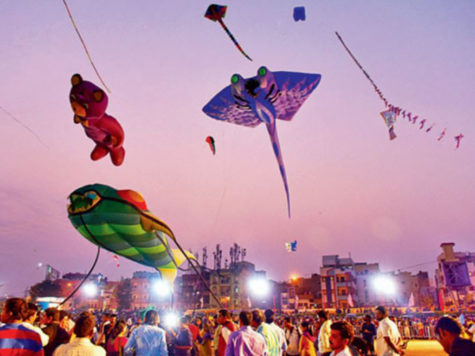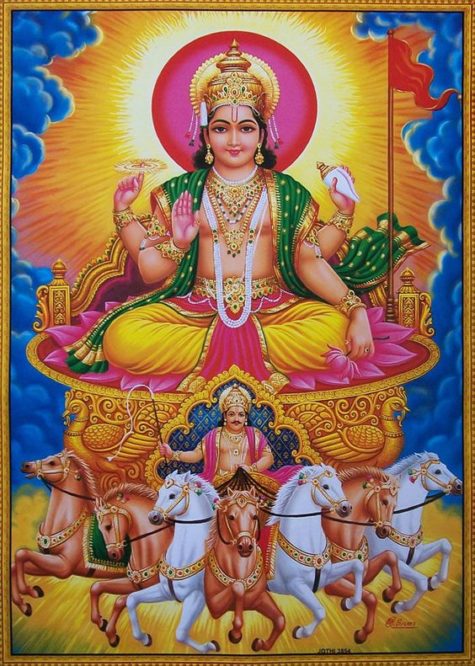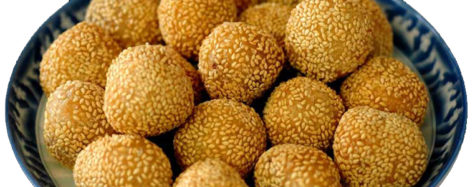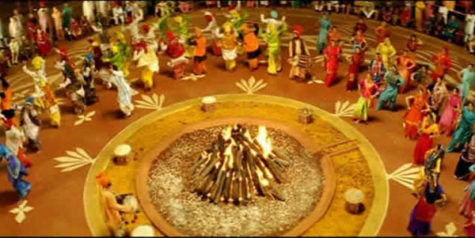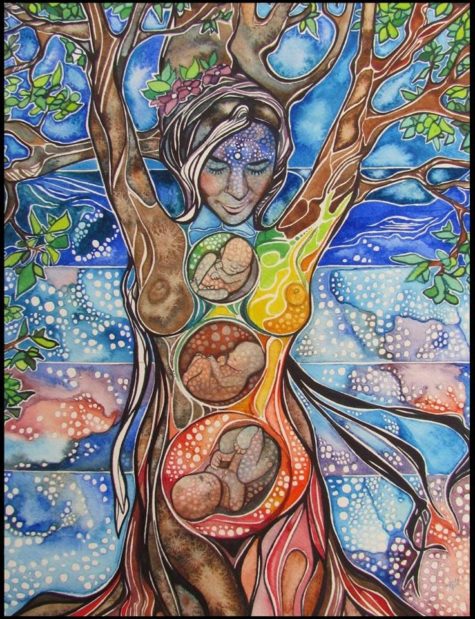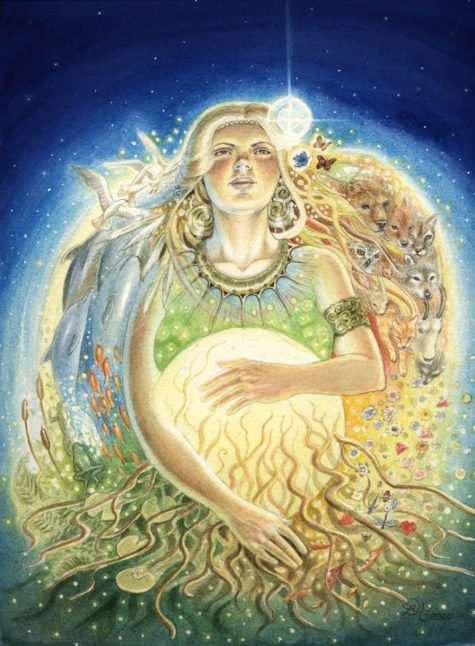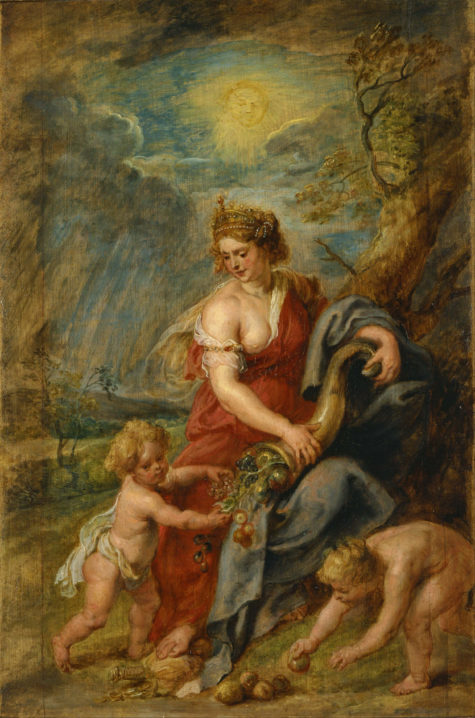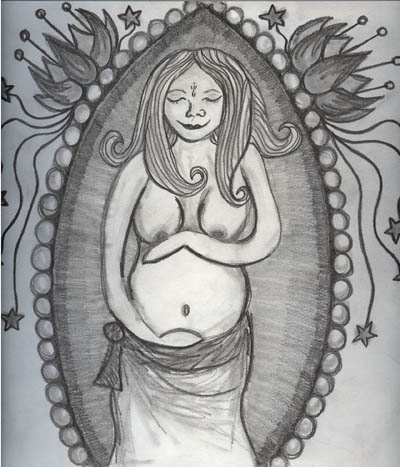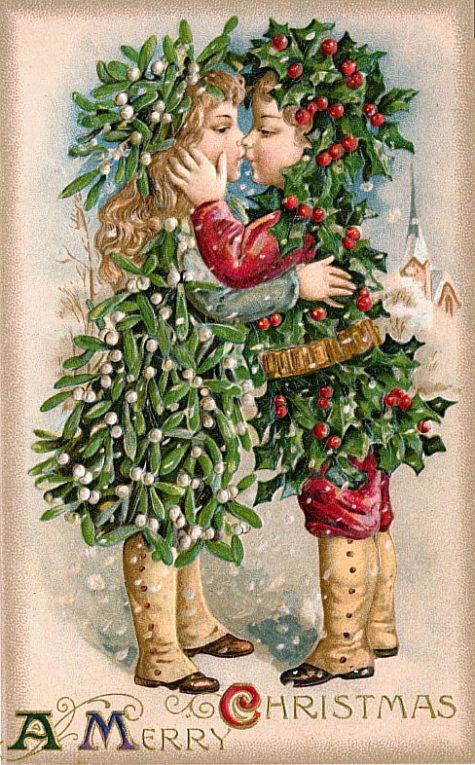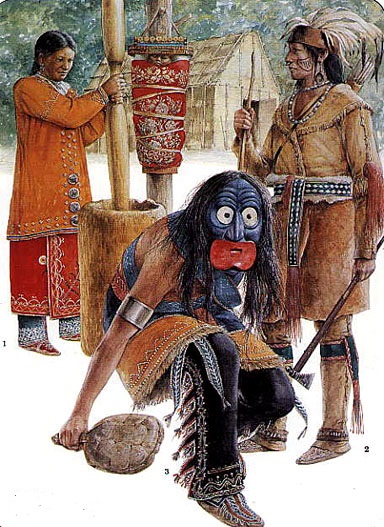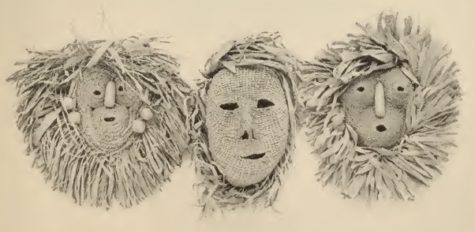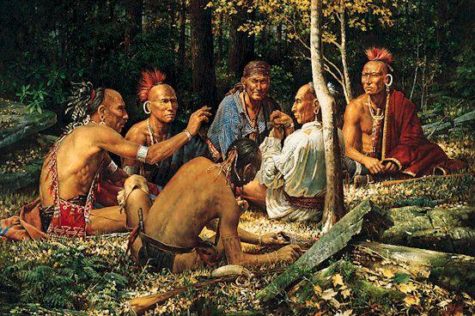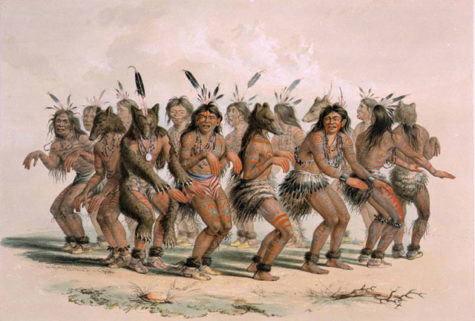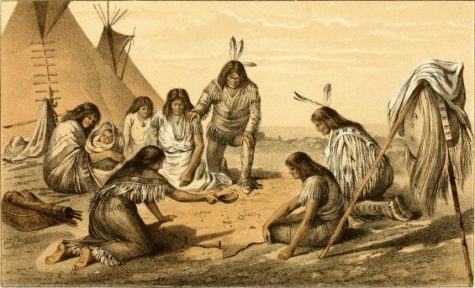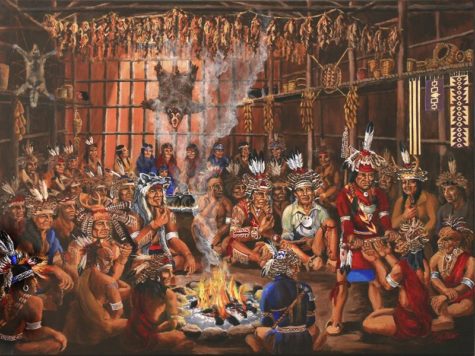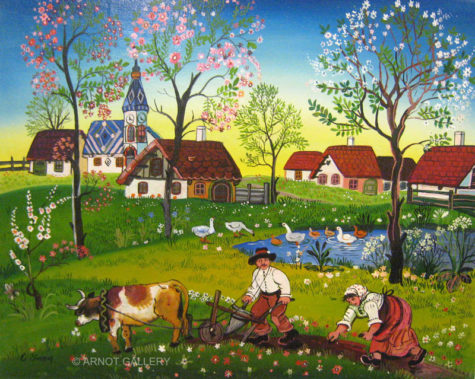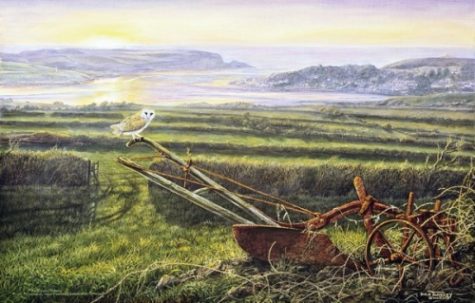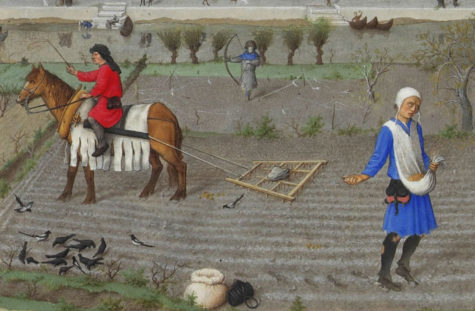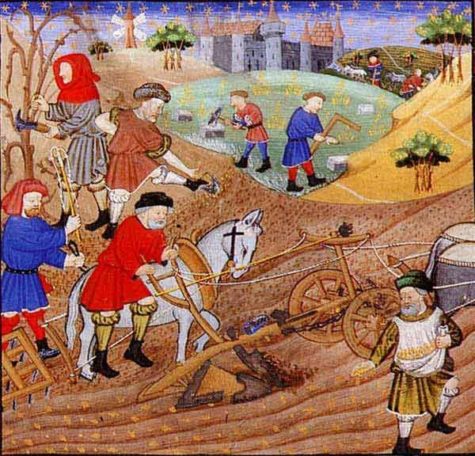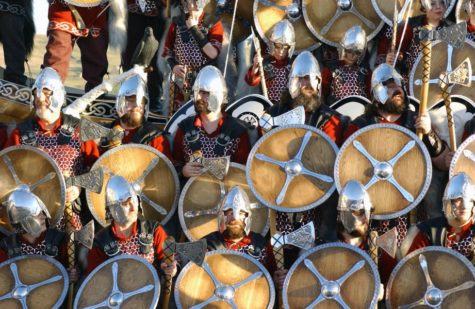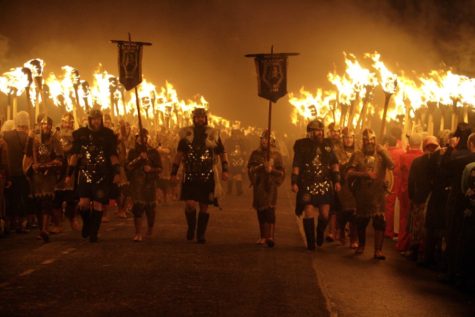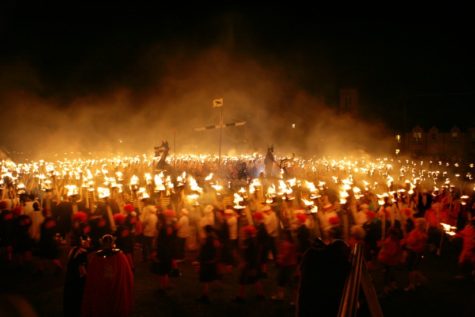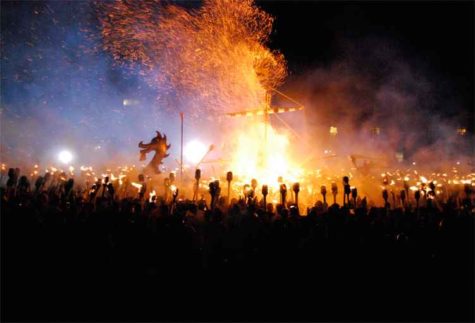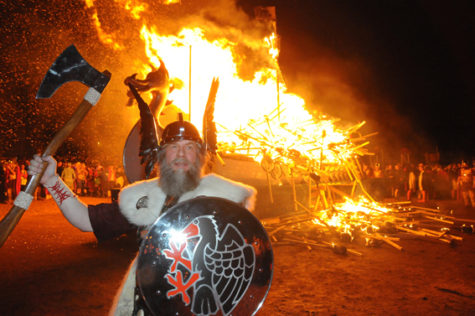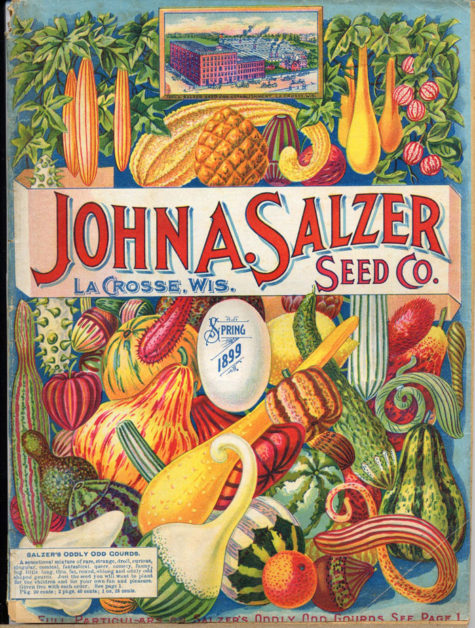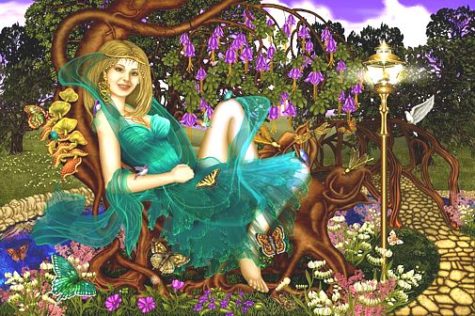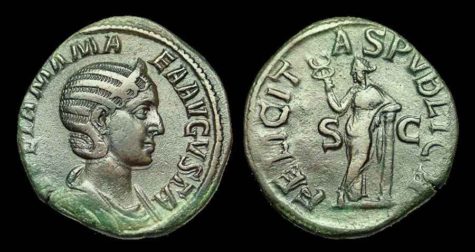January
Makar Sankranti (also known as Makara Sankranthi or Maghi) refers both to a specific solar day in the Hindu calendar and a Hindu festival in reference to deity Surya (sun) that is observed in January every year. It marks the first day of sun’s transit into the Makara (Capricorn), marking the end of the month with the winter solstice and the start of longer days.
- Significance: Festival of Harvest, welcome longer days, sun worship
- Celebrations: Kite flying, bonfires, fairs, surya puja in river, feast, arts, dance, socialization
Makar Sankranti is one of the few ancient Hindu festivals that has been observed according to solar cycles, while most festivals are set by the lunar cycle.
Being a festival that celebrates the solar cycle, it almost always falls on the same Gregorian date every year (January 14), except in rare years when the date shifts by a day for that year, because of the complexity of earth-sun relative movement.
Makar Sankranti is observed with social festivities such as colorful decorations, rural children going house to house, singing and asking for treats (or pocket money), fairs, dances, kite flying, bonfires and feasts.
The Magha Mela is mentioned in the Hindu epic, the Mahabharata, thus placing this festival to be around 2,000 years old.
Makar Sankranti is regarded as important for spiritual practices and many people take a holy dip in sacred rivers or lakes, especially Ganga, Yamuna, Godavari, Krishna and Cauvery. The bathing is believed to result in merit or absolution of past sins.
Every twelve years, the Hindus observe Makar Sankranti with one of the world’s largest mass pilgrimage, with an estimated 40 to 100 million people attending the event. At this event, they say a prayer to the sun and bathe at the Prayaga confluence of the River Ganga and River Yamuna at the Kumbh Mela.
Because the festival is dedicated to the Hindu sun god, Surya, people also pray to the sun and thank for their successes and prosperity. The traditional prayer to the sun is the Gayatri Mantra.
The Gayatri Mantra
The mantra is a hymn to the sun which represents both the physical sun and the Divine in all things. Here it is:
Om bhur bhuvah svah
tat savitur varenyam
bhargo devasya dhimahi
dhiyo yo nah prachodayat.
The eternal, earth, air, heaven
That glory, that resplendence of the sun
May we contemplate the brilliance of that light
May the sun inspire our minds.
Chanting the mantra serves three purposes.
- The first is to give back to the sun. The sun gives but never receives. The mantra is a gift back to the sun, an offering of gratitude to refuel the sun’s gracious offering.
- The second purpose is to seek wisdom and enlightenment. The mantra is a request to the sun: May we meditate upon your form and be illumined by who you are? (Consider that the sun offers its gift of illumination and energy to all beings, without judgment and without attachment to the outcome of the gift.)
- Finally, the mantra is an expression of gratitude, to both the life-giving sun and the Divine. The sensibility it evokes is more important than the literal meaning. It’s an offering, a way to open to grace, to inspire oneself to connect to the ancient vision of India.
An Auspicious Period
Makar Sankranti is regarded as the beginning of an auspicious phase or the holy phase of transition. It also marks the end of an inauspicious phase which begins around mid-December. Further it is also believed that any sacred ritual can be performed from this day onwards. The auspicious day of Makar Sankranti marks the beginning of warmer and longer days as compared to nights.
Makar Sankranti is all about forgetting bitter and sad moments which happened in the past and welcoming the new phase of life which is full of purity, knowledge and wisdom.
The Significance of Makar Sankranti
The significance of the Makar Sankranti festival is that it marks the day where there is a significant movement in the zodiac ~ the arrangement of the earth’s dial around the sun ~ and this movement brings about a new change in the way we experience the planet itself.
There are many sankrantis through the year; the two significant ones being Makar Sankranti, and right opposite, after summer solstice is Karka Sankranti. In between, there are many Sankrantis ~ every time the zodiac sign changes, it is called a Sankranti to suggest the movement of the planet, to understand that our life is sustained and nourished by this movement. If this movement ceases, everything about us will cease.
On the 22nd of December, the solstice happened, that means in relation to the sun, the movement or the tilt of the planet reaches its maximum. Now, from this day on, the northern movement is strong. Things really start changing upon the earth. From Makar Sankranti onwards, winter is being relieved step by step.
This movement is also a significant aspect in the way we reap from this planet. There was a time when human beings could eat only what the earth offered. Then we learned how to get what we wanted from the earth; this is called agriculture. When we were hunting and gathering, we only picked up what was there.
It is like when you were an infant, you ate or swallowed whatever your mother gave you. When you became a child, you asked for what you wanted. So we grew up a bit and started demanding and getting what we wanted, but still, you can only get what you want to a point that She is willing. If you stretch it beyond that, you will not only not get it, you will get something else. That is called industrialization.
Agriculture is coaxing the Mother to give what you want. Industrialization is ripping her apart. I am not speaking against something. I want you to understand the way our minds are transiting, the way human activity is transiting from one level to another.
So this is a day when we remind ourselves that everything that we are is what we take from this planet. I see everywhere in the world, people are talking about giving. I don’t know from where they give. You can only take ~ either you take gently or you grab. Did you come with your own property from somewhere? What is there to give? You can only take. Everything is offered. Take sensibly, that is all there is.
Some Thoughts About Movement
Makar Sankranti is celebrated as a very important festival in India. Sankranti literally means “movement.” Everything that we recognize as life is movement. Fortunately, people who came before us have moved on, and people who come after us are waiting for us to move on ~ don’t have any doubts about this.
The planet is moving and that is why it churns up life. If it were still, it wouldn’t be capable of life. So there is something called movement in which every creature is involved, but if there has to be movement, this movement has to be housed ~ this movement can only happen in the lap of stillness. One who does not touch the stillness of his life, one who does not touch the stillness of his being, one who does not know or has not tasted the stillness within and without, will invariably get lost in the movement.
Movement is pleasant only to a point. The planet earth is moving gently in such a beautiful manner ~ it is only changing seasons. Tomorrow, if it just speeds up, throttles up a little bit, then all our seemingly balanced minds will become imbalanced, everything will spin out of control. So movement is beautiful only to a certain point. Once it crosses that point, movement becomes torture.
So Makar Sankranti is a festival to recognize the movement, movement being celebration, movement being life, movement being the process of life and the beginning and the end of life. At the same time, the word ‘shankara’ is used to remind you that the one behind this, Shiva, is a still one; stillness is the basis of movement.
Though all the other planets are moving, the most important one is not moving. If the sun also takes a walk, then we are in trouble. He hangs there not moving. That is why everybody else’s movement is okay. But his stillness is relative because the whole solar system may be moving; the whole galaxy may be moving. So beyond that, the space which holds all this is absolute stillness.
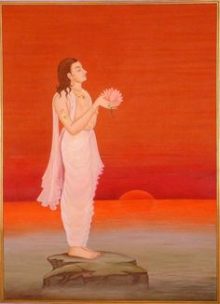 When a human being makes the necessary effort to touch the stillness within himself, only then he knows the joy of movement. Otherwise, people are bewildered by the movement of life. Every change that happens in their life they suffer.
When a human being makes the necessary effort to touch the stillness within himself, only then he knows the joy of movement. Otherwise, people are bewildered by the movement of life. Every change that happens in their life they suffer.
These days, the so-called modern life is like this ~ any change means you must suffer. Childhood is tension, puberty is great suffering, middle age is unbearable, old age is abhorred and feared, and death is celebration ~no that is pure terror.
Every stage of life is a problem because people have a problem with movement, not understanding that the very nature of life is movement. You can only enjoy and celebrate movement if you have one leg stuck in stillness. If you know what stillness is then movement would be a pleasure. If you do not know what stillness is, if you have no contact with stillness, movement is bewildering.
People are trying to track the movement. Looking at the stars, looking at lines in their hands and looking at all kinds of signs including the tea leaves. People want to read the movement of their lives somehow. This struggle with movement, this paranoia about movement, is happening because there is no taste of stillness.
If there was a taste of stillness in you, movement would not disturb you. It is something which sets a certain rhythm. Every rhythm has a beginning and an end; every movement has a beginning and an end. Movement means that which is in transition. Stillness means that which always is. Movement means compulsiveness, stillness means consciousness.
The significance of Makar Sankranti is that it is the time to remind yourself that celebrating movement is possible only when there is a taste of stillness within you.
Regional Celebrations
Because the festival is celebrated in winter, people start preparing food which can give them give them energy and also keep their body warm. Tilguls ~ Laddu of Til (Sesame) is made up of Jaggery and devotees also pay respect to Goddess Saraswati.
This type of sweet is a symbolism for being together in peace and joyfulness, despite the uniqueness and differences between individuals.
People greet each other Happy Sankranti by saying Tilgul Ghya Aani God God Bola.
For most parts of India, this period is a part of early stages of the Rabi crop and agricultural cycle, where crops have been sown and the hard work in the fields is mostly over. The time thus signifies a period of socializing and families enjoying each other’s company, taking care of the cattle, and celebrating around bonfires.
The Makar Sankranti festival is also known and referred to as the harvest festival because this is the time when harvesting is complete and there are big celebrations. This is the day we acknowledge all those who assisted in making the harvest. The farm animals play a huge role in harvesting, so the following day is for them and is called Mattu Pongal.
The first day is for the earth, the second is for us and the third is for the animals and livestock. See, they are placed a little higher than us because we exist because of them, they do not exist because of us. If we were not here, they would all be free and happy. But if they were not here, we couldn’t live.
These festivals are a reminder that we need to craft our present and our future in a conscious manner.
Also, on this day there are several Melas or fairs which are been held and one of the most famous among all melas is Kumbh Mela. It is been held every 12 years at one of four holy locations namely Haridwar, Prayag, Ujjain and Nashik.
The Magh Mela which is the mini mela is held annually at Prayag, the Gangasagar Mela held at the Ganges River, Tusu Mela in parts of Jharkhand and West Bengal and many more such fairs are been held on this auspicious day.
Regional Names
Known by different names and celebrated with different customs in different parts of the region, Makara or Makar Sankranti is an important pan-Indian solar festival observed on the same date, sometimes for multiple dates.
It is known as Pongal in Tamil Nadu, Pedda Panduga in Andhra Pradesh, Biku in Assam, Magha Mela in parts of central and north India, as Makar Sankranti in the west, and by other names. The festivities associated with Makar Sankranti are known by various names such as Lohri by north Indian Hindus and Sikhs, Sukarat in central India, Bhogali Bihu by Assamese Hindus, and Pongal by Tamil and other south Indian Hindus.
Wikipedia gives us this list:
- Suggi Habba, Makar Sankramana , Makara Sankranthi: Karnataka
- Makar Sankranthi: Andhra Pradesh, Telangana, Kerala
- Makar Sankranti: Chhattisgarh, Goa, Odisha, Bihar, Jharkhand, Madhya Pradesh, Maharashtra, Manipur, Rajasthan, Sikkim, Tripura, Uttar Pradesh, Uttarakhand, West Bengal and Jammu
- Thai Pongal, Uzhavar Thirunal: Tamil Nadu
- Uttarayan: Gujarat
- Maghi: Haryana, Himachal Pradesh and Punjab.
- Magh Bihu or Bhogali Bihu: Assam
- Shishur Saenkraat: Kashmir Valley
- Khichdi: Uttar Pradesh and western Bihar
- Poush Sangkranti: West Bengal
- Tila Sakrait: Mithila
In other countries too the day is celebrated by Hindus, but under different names and in different ways.
- Nepal: Maghe Sankranti or Maghi- /Khichdi Sankranti
- Bangladesh: Shakrain/ Poush Sangkranti
- Pakistan: (Sindh): Tirmoori
Sources:
The Goddess Carmenta is celebrated on two dates of the Roman calendar, (January 11 and 15), each day called Carmentalia. These dates should be considered as two separate festivals, rather than one festival extending over this period, yet it is not clear to us today, any more than it was during the Late Republic, why two such holidays should be in such close proximity in one month.
The festival, chiefly observed by women, celebrates Carmenta, who is the Goddess of women’s health, birthing, and prophecy. She is the inventor of letters, as Minerva is the inventor of numbers. She tells the future through Her sister Porrima and reveals the past through Her sister Postvorta, while Carmenta knows all that happens in the present.
Together the three Carmenae sisters are the Good Fates, the Three Mothers, and the Muses. The very name of Carmenta was given to song (carmen) and Latin terms for poetry, charms, and speaking-in-tongues. With Her songs she would soothe the ill and taught women how to care for themselves and their children. Her sanctuaries thus became places for women and children to receive traditional medical treatments using herbs and music.
Carmenta takes us back to a very early period, a time well before the beginnings of Rome around three thousand years ago, back into the Italian Bronze Age. She takes us back to the ecstatic tradition of the female priestesses called vates in which Latin religion began and in which the Religio Romana was first founded.
The sacred grove of Carmenta, the most ancient sanctuary in all of Rome, was located at the foot of the Capitoline Hill. It is still visited today where people gather waters from Her sacred spring. It was in this very grove that Carmenta appeared to Numa Pompilius in his dreams as the nymph Egeria. She instructed Numa on how to commune with the Gods.
With Egeria’s instruction, Numa Pompilius then established rituals for the Gods, festivals, and a calendar by which the Romans could attend these. Numa set out sanctuaries for Gods and Goddesses and he created colleges of priests and priestesses to serve the Gods and Goddesses. Egeria taught Numa the laws which he handed down to the Romans and which still govern our sacramental rituals today.
One of the laws of Numa states:
“The Gods are not to be represented in the form of man or beast, nor are there to be any painted or graven image of a deity admitted (to your rites).”
As one of the oldest Goddesses of Rome, whose worship was established by Numa, Carmenta was never represented by an image. It was sufficient to feel Her presence in the sacred grove below the Capitoline. In the same way, Vesta, Goddess of the Hearth, is never represented by an image but only by living fire.
Another law of Numa holds that:
“Sacrifices are not to be celebrated with an effusion of blood, but consist of flour, wine, and the least costly of offerings.”
The restriction against the use of blood sacrifices was so strong in the worship of Carmenta that no one was allowed to enter Her sacred grove wearing anything made of leather or animal hide. It is not right to take the life of another creature in worshiping the Goddess who helps birth life into the world. And thus it follows that today we offer Carmenta bay leaves as incense, a libation of milk, and popana cakes made of soft cheese and flower.
Invocation to Carmenta
Goddess of Women’s Health
Come, be present, Carmenta.
May Your sisters Porrima and Postvorta attend You.
With joyful mind come, Mother Carmenta, on You I call,
Come, stand by me, stay, and listen to my pleas.
Speak to me once more, in Your own words, as You did before.
In Your sacred grove where Egeria counseled King Numa,
bear forth now Your soothing songs to dispel our sorrows.
Come forth! I call to You, Good Goddess,
Great Goddess of charms.
Give voice, happy Voice of song,
With soothing songs as will cure our ills, or whatever else we fear.
Spare our daughters heavy with child, spare our wives in their pangs of labor,
Care for the mothers who worry over their children.
With pious rite I call out, I summon,
I entice with songs that You come forth, Carmenta,
And look favorably upon the matrons of our families.
In You, dearest Mother, in Your hands we place our safekeeping.
In offering to You this cake of cheese I pray good prayers
in order that, pleased with this offering of popana,
May You be favorable towards our children and to us,
Towards our homes and our households.
More About The Festivals:
According to legend, the cult of Carmenta predated Rome itself. In some accounts She was known as Nicostrate, the mother of Evander, who was fathered by Mercurius. Evander was the legendary founder of Paletum, a village that gave its name to the Palatine Hill. Her sacred grove, therefore, may have originally lain beneath the Palatine Hill as some ascribe it.
Indeed, it may be that it was in Her sacred grove beneath the Palatine that Romulus and Remus were said to have been discovered being suckled by a she-wolf, since Carmentis was so closely associated with the care of infants.
It was said that later Numa Pompilius founded a sacred grove for Her beneath the Capitoline Hill. The dedication of two groves to Carmentis is one possible reason why there were two days celebrated as Carmentalia in the month of January.
It was proposed by Huschke that the two festival days represented the Latins of Romulus and the Sabines of Titus Tatius, just as there were two companies of Luperci and two companies of Salii. Were that the case we might expect that She once had a sacred grove on the Esquiline Hill, and that Numa’s dedication beneath the Capitoline represented a union of the two culti Carmentalis.
The fasti Praeneste suggests that the second date was added by a victorious Roman general who had left the City by the Porta Carmentalis for his campaign against Fidenae. The gate received its name from its proximity to the sacred grove of Carmentis.
Yet another story was told by Ovid, linking the two dates to a protest by the matrons of Rome in 195 BCE. During the fourth century the Roman Senate had granted patrician matrons the privilege of riding in two- wheeled carriages in reward for their contribution in gold to fulfilling a vow to Apollo made by Camillus. The privilege was later to be temporarily revoked during the Second Punic War (215 BCE) along with sumptuary laws that limited the use of colored cloth and gold that women could wear, in order to save on private expenses and war materials (horses) and thus help in the war effort.
But the Senate did not at first renew the privileges at war’s end. In 195 Tribunes Marcus Fundanius and Lucius Valerius finally called for the repeal of this lex Oppia, but they were opposed by the brothers Marcus and Publius Junius Brutus.
Supporters for repealing the lex Oppia, and those who supported its remaining in effect, gathered daily on the Capitoline to argue over the matter. Soon women began to join in the disputes, their numbers increasing daily, even so much as women from the countryside entered into the City to advocate for their rights. The natural place for them to first congregate would have been at the grove of Carmentis. This may be what Ovid indicates by linking the protest to the Carmentalia.
Consul Marcius Porcius Cato spoke out against repealing the lex Oppia. The women then resolved to “refuse to renew their ungrateful husbands’ stock” until their privileges were restored, Ovid referring to the women resorting to abortion as their means of protest.
In a later period the Temple of the Bona Dea would become associated with the use of abortive herbs, and Carmentis associated with the use of the same herbs in birthing. In actuality both Carmentis and the Bona Dea were associated with birthing or prevention of pregnancy, and the difference between the Capitoline and Aventine temples may have been one of class distinction. Eventually the matrons of Rome regained their rights and, according to Ovid, the second Carmentalia was then begun in thanks to the Goddess for Her support. Ovid’s story is the least likely and most fanciful to account for the two Carmentaliae of January.
The notion that there may have earlier been two groves dedicated to Carmentis prior to the known grove beneath the Capitoline is a reasonable speculation, but still would not account for the two festivals. We are left then with the information provided by the Fasti Praeneste, although the inscription is mutilated and uncertain. This source may indicate that while the Carmentalia held on 11 January was dedicated to Carmentis, that of 15 January was intended to honor Janus as guardian of the Porta Carmentalis.
Different aspects of Carmentis related to Janus, and thus it is possible that a festival for Him would include Carmentis in similar fashion as festivals for Ops and Consus. The fact remains that we don’t know today why the month of January has two separate festivals for Carmentis.
Ritual for the Festival of Carmenta
- Color: Red
- Element: Earth
- Offerings: Give gifts to pregnant women in need.
- Daily Meal: Eggs.
- Altar: Upon a red cloth place seven red candles and the figure of a pregnant woman. If possible, a woman who is with child should be present and honored on this day.
Carmentalia Invocation
All things grow in the dark place
Safe within the womb of the Mother,
Safe within the dream of the Mother.
The Earth lies now asleep
Full with big belly,
Each seed pregnant with hopes
Waiting for the return of the Sun.
So we are each of us,
Pregnant with hopes and dreams,
Big-bellied in our minds,
Waiting to for the moment
To begin our sacred labor.
This is the time of waiting,
Feeling the child within come to fruition,
Feeling it grow and change,
Feeling the faint motions
That signify the oncoming flood of life.
Call: May Life burst forth in a flood of joy!
Response: May Life come forth through the gate of eternity!
Call: We hail the Mother beneath our feet!
Response: We hail the Mother within our souls!
Call: We hail the Mothers from whence we descended!
Response: We hail the Mothers that are yet to bring forth!
Call: We hail the growth of possibility!
Response: We hail all that it yet to come!
Call: We hail the growth of the future!
Response: We wait for the birthing-time with open arms!
Chant:
Mother I feel you under my feet
Mother I hear your heart beat
Sources:
When all is done, when the twelve days of Christmas are over, we may begin to look forward to the next year. It is time to dismantle your Solstice shrine (if you made one) and time to take down the Christmas tree if you have one. Some things you will want to keep; the more ephemeral components can be returned to nature, to be remade next year.
As you put things away in a box for another year, give thanks to every single one of the gifts of the Solstice.
Here’s an a poem from an old French Epiphany carol:
Noel is leaving us, Sad to say,
But he will come again, Adieu Noel.
His wife and his children Weep as they go;
On a grey horse They ride through the snow.
The Kings ride away In the snow and the rain;
But after 12 months We shall see them again.
The Iroquois Mid-Winter Ceremony, for continuation of all life-sustaining things is a series of rituals, observed by the six tribes of the Iroquois Confederacy, which celebrates new beginnings and serves as a spiritual new year. The ceremony does not have an official date on the calendar, but rather is determined when the first new moon arrives while both the Ursa Major and Ursa Minor constellations are visible, which occurs in either February or January.
- According to one calendar, this will be Feb 19 thru Feb 28, in 2018.
- According to other star maps, Ursa Major and Ursa Minor can be seen above the horizon in northern areas all year.
The major events of the Midwinter Ceremony consist of the Tobacco Invocation, the Dream Sharing Ritual, the False Face Society, the Peach Stone Game, the Bear Dance, the White Dog Sacrifice, the Great Feather Dance, The Big Heads and the Stirring of the Ashes, and a closing ceremony. These events take place over the course of ten days with no specific order, but generally begin with The Big Heads and the Stirring of the Ashes and ends with a closing ceremony.
- Big Heads and the Stirring of the Ashes
Generally, the first of the activities is the Big Heads and the Stirring of the Ashes. A group of anonymous messengers called the Big Heads visit the tribe’s longhouse. They wear ceremonial outfits made of buffalo skins and braided corn husk masks which symbolize the hunt and the harvest.
They also carry a corn mashing mallet used in the Stirring of the Ashes. In the Stirring of the Ashes, the Big Heads go from house to house stirring the ashes in fire pits of each household while they ask that the New Year brings renewal and fertility to the land. This is gesture of gratitude to “The Creator” as ashes serve as a symbol of the earth and the cycle of life.
- Tobacco Invocation
The next ritual to usually take place after the Stirring of the Ashes is the Tobacco Invocation. It consists of sprinkling tobacco in the embers remaining from the Stirring of the Ashes or outright smoking as an offering. The smoke that rises from the burning tobacco symbolically rises to the heavens to sign of giving thanks and to give messages to the Creator and other spirits.
- Dream Sharing Ritual
The Dream Sharing Ritual serves as a ritual of healing. It serves as a way to get rid of troubling thoughts and a way to make wishes come true as the Iroquois believe that dreams represent ways to resolve real life problems. Tribe members would describe their dreams in front of others so they may give their interpretation of the events that take place in the dreams.
The person who has the best interpretation has to then aid the tribe member in seeing that the issue gets resolved. For dreams that represent physical or mental ailments, they dreamer is sent to the False Face Society which is a group of medicine men.
- False Face Society
The False Face Society is a group of Iroquois medicine men who wear masks made out of wood. These people can consist of either men or women, but only the men wear the traditional masks. They are said to have the ability to scare off the evil spirits that cause illness. Those who are deemed of needing healing during the Dream Sharing Ritual are sent to these medicine men during their gathering. Healing rituals consist generally of blowing or rubbing hot ashes from a fire on those in need of curing.
- Bear Dance
The Bear Dance is another healing ritual that coincides with the False Face Society gathering. It is conducted by both men and women by lumbering and waddling like bear counter clockwise around a person that was ill.
This can be done either privately or publicly. The Iroquois believed that this dance can heal the problems of person that were placed upon them from the previous year.
- Peach Stone Game
The next event is the Peach Stone Game. This game symbolizes the Iroquois creation story where the Creator and his evil brother played a game in competition during the creation of the Earth, the renewal of the Earth like the Stirring of the Ashes, and the battle for survival of crops.
The game consists of six peach pits which are colored black (through burning for example) on one side. They are placed in a bowl and shaken while two teams take turns placing bets in the form of beans on how many black sides will face up. The teams are given an equal number of beans, and the first team to lose all of their beans loses the match. The results of this game are also used to predict the success of the coming year’s harvest.
- White Dog Sacrifice
One of the following events is the White Dog Sacrifice. Originally, this ritual consisted of killing a white dog, a symbol of purity, by strangulation as to leave no marks. The dog was then adorned in red paint, feathers, beads, wampum, and ribbons. It was placed on fire along with tobacco so that smoke may carry their, sacrifice, and prayers to the Creator.
Today, however, the act of killing a white dog is replaced by a white basket due to the animal cruelty in the original proceedings of the ritual.
- Great Feather Dance
The final event before the closing ceremonies is the Great Feather Dance. The dance is held on eight night of the nine-day festival, and serves as way to welcome the new spiritual year as well as thanking the Creator. Dancers wear traditional tribal clothing and turtle shell rattles, and dance to two singers that sit facing each other. They give thanks to all the Creator has bestowed upon them during the previous year by dancing in rhythm and shaking the rattles.
The event finally concludes with a closing ceremony where a speaker presenting an overview of the events and address of thanksgiving. New tribal council members who will lead the people until the next event are chosen and presented to the crowd. By the end of this ceremony, all members of the tribe are purified and a new year is welcomed.
Source: First Nation Rituals
- Time: Early to Mid-February, Normally Observed at First New Moon
- Focus: Disir, Goddesses and The Beginning of the Planting Season
- Overall: A time to honor the Disir (in a broad sense), Goddesses and those connected with the coming power of Spring – the Vanir, local land wights and Nerthus to name a few examples.
The Charming of the Plough, also referred to as Éowemeolc is the Anglo-Saxon early spring or pre-spring festival. It was clearly so early as to be more about seeing signs of spring than celebrating its arrival. The early date serves the purpose of doing the blessing before there is any danger of cultivation starting without it.
Charming of the Plow is a ceremony that marks the beginning of the planting season; when the first furrows are made in the fields. In the Old World that usually meant bonding with and asking for the blessing of Gods and Goddess, the local land spirits and perhaps anyone else who might help insure the crops are a success.
The Vanir, Nerthus and land wights are thus honored at this time for the coming Spring and to wish a healthy season for the crops. Farm tools are blessed and an offering of bread and mead/milk are traditionally given to the land wights upon the first furrows made into the earth. Even as a home gardener I like to do this each year.
Disting (Old Swedish: thing at the time of the sacrifice to the Disir~ which are female ancestral guardian spirits), is still modernly observed as an annual market in Upsalla, Sweden. Traditionally, it was a time when many would gather for the Thing of All Swedes, hold a great market and a special blot at the temple in Upsalla for the Disir.
Recorded as a regular feast only in Sweden, this blessing takes place in early or mid-February. The name means ‘Thing (assembly) of the Goddesses’. In Sweden, it was the first public moot/fair of the year; in Denmark, this is the time when the first furrows were ploughed in the field (an activity much hedged about with folk custom). This is a feast of new beginnings, at which the work of the year to come is blessed. this time, the Earth is prepared to have the seeds sown so that growth will take place in the land. Also, gifts may be given to the disir and elves at this time.
Dating The Blessing
Since the Icelandic months had become fixed, while the Anglo-Saxon months were fully lunar, it may not be possible to determine whether the blessing of the plow or earliest harbinger of spring festival was held at the same time in all Germanic areas—tied to the time of Yule—or whether it depended on local agricultural conditions, such as the beginning of lambing or the first partial thaw of the new year.
Whatever the traditional date for Blessing of the Plough, whether January or February, it would be in late winter or very early spring, well before an outsider might expect the first furrow to be cut.
These days we usually celebrate Éwemeolc/Blessing of the Plough on February 2—to coincide with the Celtic Imbolc, and because it is a cross quarter day, midway between Yule and Eostre/Ostara. This is the source of the American Groundhog Day celebration, because the spring equinox is 6 weeks away.
About the Name:
The Anglo-Saxon name refers to ewes (female sheep) giving milk because they have birthed their lambs. The Anglo-Saxons got much of their milk from sheep. This holy day has several names and several possible spellings. First and most obviously, “plough” is normally “plow” in the US. Other names include:
- Éowemeolc
- Éwemeolc
- Ewemeoluc
The second month of the Anglo-Saxon year, corresponding roughly to February was called Sólmónað. Bede writes: “Solmónaþ can be called the month of cakes, which [the Angles] offered to their gods during it.” However, no such word sol or sól is recorded in Anglo-Saxon, so some scholars think the month was actually named after the sun, but the sun is sunne in Anglo-Saxon.
So the other theory is that the month-name actually comes from sulh, “plough.” The cakes are presumed to have been offered by leaving them in the furrows; they may have been called “plough-cakes.”
This is one of the reasons modern Anglo-Saxon heathens celebrate Blessing of the Plough at this time. The other is that plows have clearly been blessed (or charmed) in England since at least Anglo-Saxon times.
About the Blessing:
This is a syncretistic charm—a melding of Christian and heathen elements—intended to cause a barren field to grow a good crop, or to reverse a spell that has been placed on the field. It also seems clear that blessing the plow and using it to cut the first furrow and then wetting it with a special milk mixture—which would presumably be ewe’s milk—relate as much to starting off any agricultural year in the best way possible as to reversing a curse.
The Field Blessing Charm:
Here is the remedy, how you can improve your fields if they do not want to grow well or when some harmful thing has been done to them by a wizard or poisonous sorcery. Take then at night, before dawn, four sods from four parts of the land and mark how they were before.
Take then oil and honey and yeast, and milk from each kind of livestock that may be on the land, and a piece of each kind of tree that may grow on the land, except for “hard trees”, and a piece of each plant / herb known by name except for glappan (burdock) alone, and then put holy water theron, and then drip it thrice on the base of the sods, and then speak these words:
Crescite, grow, and multiplicamini, and multiply,
et replete, and fill, terre, the earth.
In nomine patris et filii et spiritus sanctu sit benedicti.
And the Pater Noster as often as the other one. And after that, carry the sods to church, and a mass-priest should sing four masses over the sods, and one should turn the green side towards the altar, and afterwards one should take the sods to where they were previously, before the setting of the sun.
After this, four crosses are made from branches, inscribed with the evangelists names, and buried face-down in the pits from which the sods were taken.
When all that is done, then let someone take unknown seed from beggars and give them twice as much as he took from them, and let him gather all his plowing gear together; then bore a hole into the plow beam putting into it incense and fennel and hallowed salve and hallowed salt. Then take that seed, place it on the body of the plow, then say:
Erce, Erce, Erce, mother of the earth,
may the almighty grant you, the eternal lord,
fields growing and flourishing,
increasing and strengthening,
high shafts, bright fruits,
and the abundant barley-growth,
and the white wheat-growth,
and all growth of the earth
May the etrnal lord grant him,
and all his holy ones, who are in heaven,
that his produce may be defended against all enemies,
and that it be protected against all evils,
against poisonous sorceries sown over the land.
Now I ask that the ruler, he who shaped this orld,
that there may be no speaking-woman or a skilful man
who can turn to naught words thus spoken
Then let someone drive forth the plow and open the first furrow: then say:
May you be well, earth, mother of men!
May you grow in God’s embrace,
filled with food for use by men.
The original text of the charm may be found here: Metrical Charm For Unfruitful Land
Sources:
January 31 is Disfest or Disablot which is a day of sacrifice honoring the Disir. The Disir are all the female relatives from the eons of time that have passed over and over see as well as protect their living family members.
In some homes every candle and light is lit in the house to honor them. A sacrifice of the very best food and drink in the house is given to the Land Wights as well. It is a day of remembrance and honoring the females that passed over and to thank them for their loving protection.
Source: Pagan Calendar
Up Helly Aa refers to any of a variety of fire festivals held in Shetland, in Scotland, annually in the middle of winter to mark the end of the yule season and celebrate the arrival of the Vikings. Traditionally held on the last Tuesday in January, the festival involves a procession of up to a thousand guizers in Lerwick and considerably lower numbers in the more rural festivals, formed into squads who march through the town or village in a variety of themed costumes.
The current Lerwick celebration grew out of the older yule tradition of tar barreling which took place at Christmas and New Year as well as Up Helly-Aa. After the abolition of tar barreling, permission was eventually obtained for torch processions. The first yule torch procession took place in 1876. The first torch celebration on Up Helly-Aa day took place in 1881. The following year the torch lit procession was significantly enhanced and institutionalized through a request by a Lerwick civic body to hold another Up Helly-Aa torch procession for the visit of the Duke of Edinburgh. The first galley was burned in 1889.
There is a main guizer who is dubbed the “Jarl”. There is a committee which you must be part of for fifteen years before you can be a jarl, and only one person is elected to this committee each year.
The procession culminates in the torches being thrown into a replica Viking longship or galley. The event happens all over Shetland, but it is only the Lerwick galley which is not sent seaward. Everywhere else, the galley is sent seabound, in an echo of legendary Viking sea burials.
After the procession, the squads visit local halls (including schools, sports facilities and hotels), where private parties are held. At each hall, each squad performs its act, which may be a send-up of a popular TV show or film, a skit on local events, or singing or dancing, usually in flamboyant costume.
Due to the often-flamboyant costumes and the large quantity of males dressing up as females (Traditionally, the Capital festival does not permit women to partake in the squads) in the Lerwick festival, it has earned the joke name ‘Transvestite Tuesday’. The photos below show a few examples of the festival’s highlights.
Source: Wikipedia
Official Website: Up Helly Aa
Called Feriae Sementivae, this one or two day Roman festival was moveable, but generally began between January 24 and January 26. Sacred to Tellus, and Ceres, this festival was for the protection of seeds, either those sown the previous fall, or those to be sown in the spring. During Sementivae plowing oxen were decorated with garlands, and puppets or masks were hung from tree branches.
This is an excellent time to begin to think about planting a “Witch’s Garden” and to do spellwork involving seeds. Spiritually and metaphysically, this is an optimum time to sow the internal seeds of what we hope to bring forth as the year unfolds.
- Presiding Goddess: Nokomis
- Themes: Prosperity, Luck, Providence
- Symbols: Gold, Golden items, Corn
About Nokomis: In Algonquin tradition, Nokomis is the “grandmother” who supplies us with the earth’s riches and gives nourishment to humankind in times of need. When people are hungry, Nokomis provides food. When there is no food to be found, she offers to let us consume her spirit, thereby continuing the cycle of life.
To do Today: Today marks the anniversary of the discovery of gold in California and the resulting expansion westward in the United States. In keeping with this prosperous, fortunate theme, wear or carry something gold today to bring a little more of Nokomis’s abundance your way.
For financial improvements, especially if you have any pressing bills, eat corn (any type) today. Before consuming it pray to Nokomis, saying:
“Grandmother, see the sincerity of my need.
Go to your storehouse and dispense _____
(fill in the minimum amount you need to get by)
so that I might meet my obligations.”
Eating the corn internalizes the energy of the prayer so opportunities to make money start manifesting.
If you’re pressed for time, grab a kernel of unpopped popcorn and put it in your wallet or purse to keep Nokomis’s prosperity (and your cash) where it’s needed most.
The History:
In January of 1848, James Marshall had a work crew camped on the American River at Coloma near Sacramento. The crew was building a saw mill for John Sutter. On the cold, clear morning of January 24, Marshall found a few tiny gold nuggets. Thus began one of the largest human migrations in history as a half-million people from around the world descended upon California in search of instant wealth.
From: 365 Goddess and other sources
January 17 is an excellent day for all magickal workings having to do with luck, success, and money.
It is the feast day of Fausta Felicitas, an ancient Roman Goddess of Good Fortune and Lucky Happenstance. Her name is essentially two words of the same meaning, likely doubled up for emphasis, for fausta in the Latin is the adjective “favorable” or “auspicious”, while felicitas is the noun meaning “luck”, “good fortune” or “happiness”; Her name can be translated as the nicely redundant “Lucky Luck”, though “She of Auspicious Good Fortune” probably sounds better.
By the way, the Latin felix, “happy”, and felis “cat” are related, through the theme of “fruitfulness”, as cats have many young; I’m tempted, however, to interpret the connection as referring to purring, an obvious and defining feature of happy cats.
Her name evokes the Latin saying “Quod bonum faustum felix fortunatumque sit!”, which translates as “May it be good, lucky, happy, and blessed!” According to Cicero (who lived 106-43 BCE), this phrase had been used since ancient times as the proper ritual formula said at the beginning of all kinds of projects or events to assure an auspicious outcome — for example, when cities or colonies were founded, at public rites, at the opening of festivals, or at sacrifices.
Images of this Goddess are found most often on Roman coins.
When casting the spells, the addition of the Latin saying “Quod bonum faustum felix fortunatumque sit!” as well as invoking the power of the Goddess herself would seem to ensure an even more successful outcome.
Found at The Obscure Goddess Online Directory

